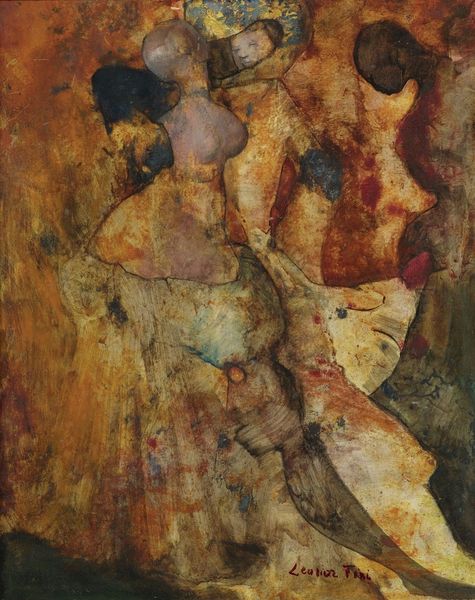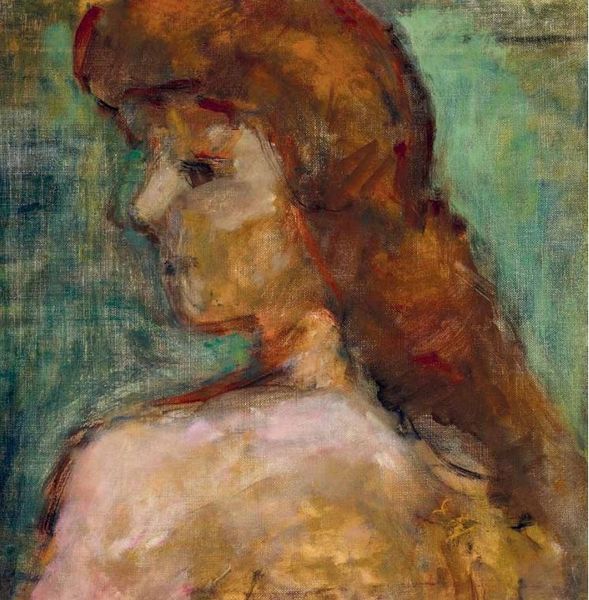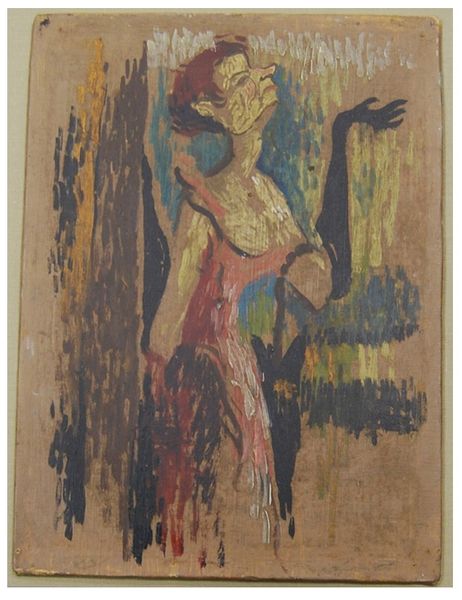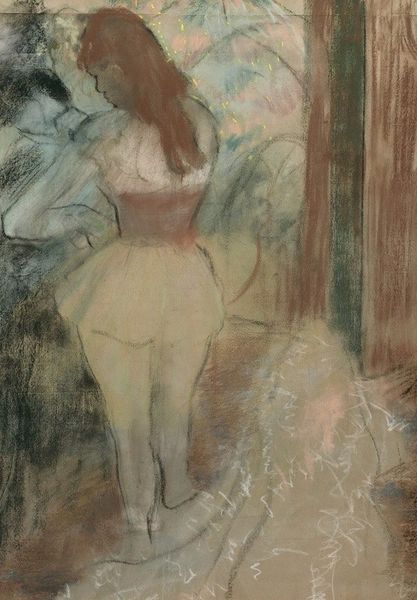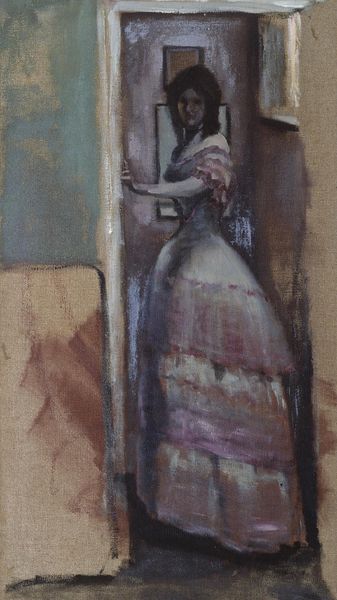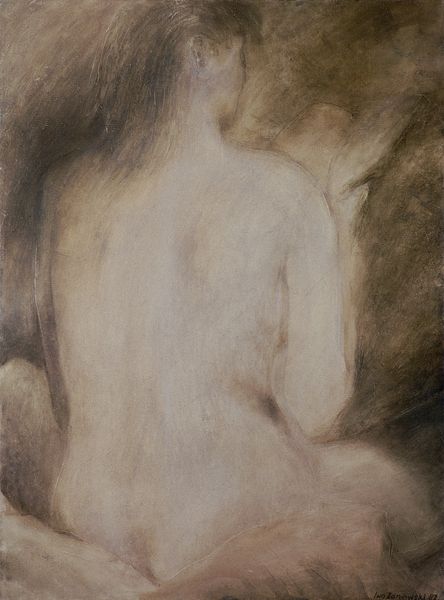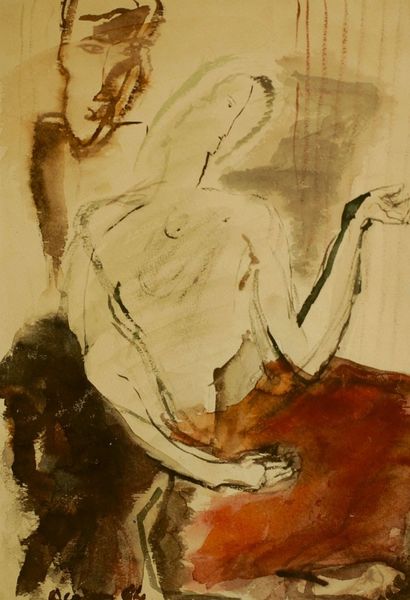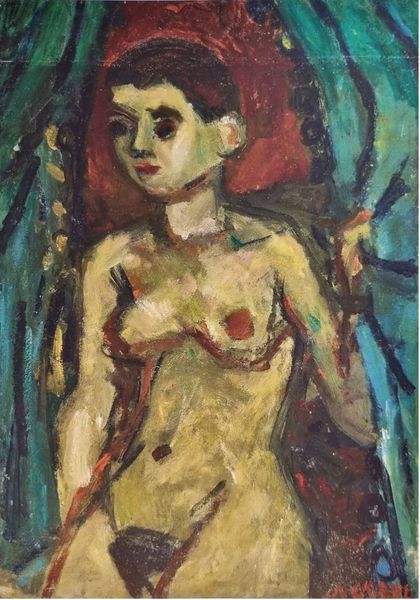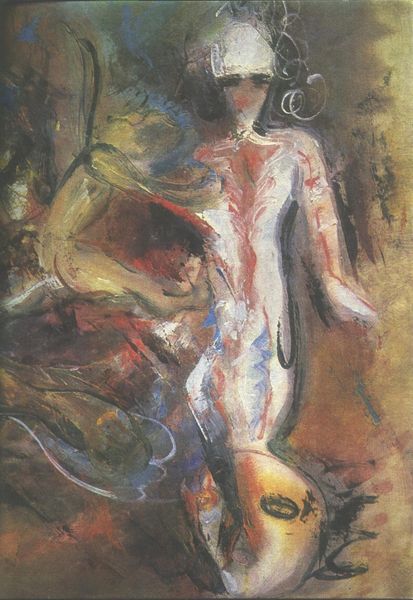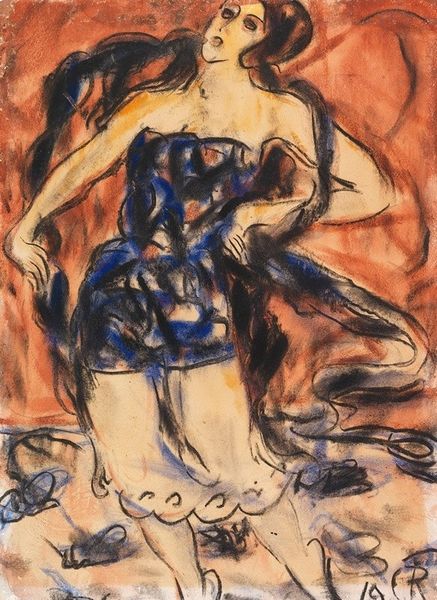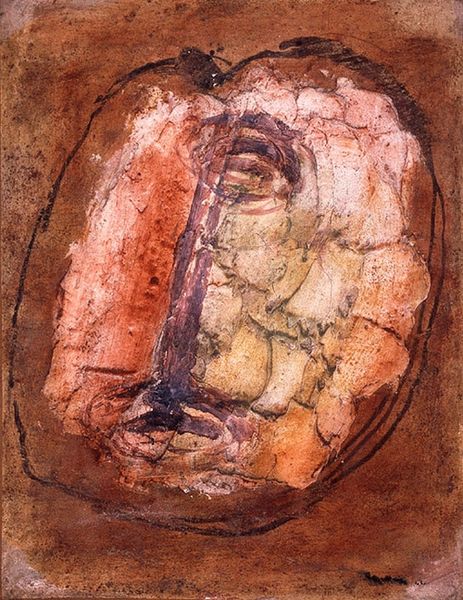
Dimensions: 116 x 80.7 cm
Copyright: Jean Fautrier,Fair Use
Editor: We’re looking at “Sarah,” a matter painting done in 1943 by Jean Fautrier. It's oil paint on, well, a lot of texture! It's… unsettling. It feels almost like the figure is emerging from, or being consumed by, the ground. What's your take? Curator: Considering Fautrier’s "Hostages" series created around the same time during the Second World War, what stands out to me here is the manipulation of materials to reflect the brutal social and political realities of the era. Notice the thick impasto – the way the paint is built up, almost sculpted. Do you see how that materiality speaks to the physical and psychological toll of war? Editor: Absolutely, now that you mention the thick paint, it almost looks like scarred tissue. But is he just using materials to depict trauma or is there something more intentional at play? Curator: Think about what it means to *make* something like this. He's not just representing trauma, he’s enacting it in the studio. Fautrier is engaging with the physicality of suffering and violence in a very tactile way through a brutal process. This raises the question: Where does representation end and direct engagement with the materials of conflict begin? Also, knowing that matter painting blurs the distinction between traditional art and construction or craft, would you say it amplifies the horror? Editor: Definitely. Seeing it as closer to a craft or act of construction – or even destruction – gives it more weight. It is less representational and more about lived experience. It pushes past the boundary of ‘fine art’. I hadn’t considered how deliberately Fautrier was bringing the process into the art. Thank you! Curator: Of course. Examining how an artist’s choices with material and process can illuminate social contexts offers fascinating insights into the intersection of art, labor, and historical experience.
Comments
No comments
Be the first to comment and join the conversation on the ultimate creative platform.
